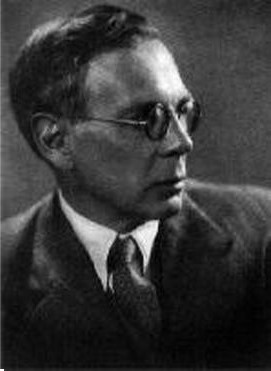
He could enjoy; at least he could refuse not to enjoy. He could refuse and reject damnation.
With a perfectly clear, if instantaneous, knowledge of what he did, he rejected joy instead.
Charles Williams’ novels have been a major influence on my own works (partly, certainly, by way of C.S. Lewis’ That Hideous Strength, but to a great degree on their own account). Of all those books, it’s the 1937 urban fantasy Descent Into Hell that has most kept me company through the years, because I recognize my own vulnerabilities in it.
The book is misleadingly simple to explain, yet complex in the execution. The action centers on the production of a new play by the poet Peter Stanhope, in his home town and residence of Battle Hill, a suburb north of London. Among the actors is Pauline Anstruther, a young woman crippled by constant fear. Occasionally through her life, and increasingly frequently in recent weeks, she has been seeing her doppelganger, a double of herself, approaching her up the street. Her fear of the apparition is increased by her fear that she is losing her mind. She’s ashamed to share the problem with anyone, until finally Stanhope himself draws it out of her. He is surprisingly unsurprised, and explains to Pauline the doctrine of exchange, by which Christians may literally bear one another’s burdens. He promises to carry her fear for her, and the results are immediate. But Pauline learns that this relief is only the first step in her own assignment, that of carrying the burden of yet another person – an ancestor of hers who was martyred under Bloody Mary. (In Williams’ view, as in quantum physics, an effect may precede its cause.)
Meanwhile, we also have the chilling tale of Lawrence Wentworth, a noted but superficial military historian, also a resident of Battle Hill. Wentworth is experiencing what we now call a midlife crisis. He has grown obsessed with Adela Hunt, a pretty and superficial young woman who’s engaged to a young man but likes to flirt with him. Through the machinations of a local witch, Lawrence is presented with a simulacrum of Adela, a soulless automaton which embodies his lustful imaginations of what he thinks Adela ought to be. Under the spell of the false Adela, Lawrence gradually disengages from everything that mattered to him – even some of his petty sins might have offered a roundabout road to salvation, if he desired it, but all he really loves, at bottom, is himself as he seems himself reflected in the false Adela. And so he is damned.
There’s yet another plot thread, touching both Pauline’s and Lawrence’s stories, involving a pitiful ghost who never lived much of a life and died a suicide. He wanders in a sort of limbo in another dimension of Battle Hill, and a way to salvation is offered to him as well.
What I had forgotten about Descent Into Hell was how dense and difficult the prose is. The characters’ actions are fairly straightforward. But the author is constantly informing us what is going on on the heavenly or spiritual level. And that commentary is what makes the book a difficult read. Author Williams goes very deep into his theology and his personal speculations on theology here. I’m more familiar with Williams’ thinking than most people, but I often had trouble following.
And yet it was worth it – for me. I do love Descent Into Hell.
There were interesting points I noticed for the first time on this reading: for instance, Lawrence neglects his scholarship as part of his process of damnation, but Stanhope, in another place, sets aside his poetry, in a different way, and that’s part of his process of sanctification. Nice touch, symmetrical and instructive.
Recommended, if you’re up for a challenge. This e-book edition contains some OCR errors.






